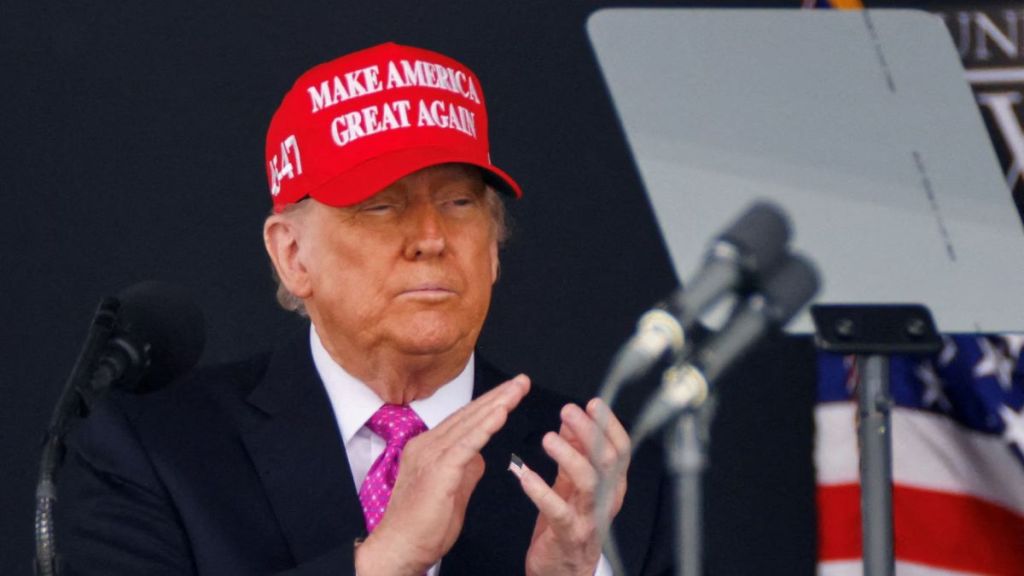After a hard-negotiated trade pact between the US and Indonesia, which saw the latter extracting a cut in reciprocal tariff from 32% to 19% in lieu of liberal tariff reliefs to the US and a slew of purchase commitments spanning energy, aircraft and farm goods, president Donald Trump has said a “similar” deal could be sealed with India.
However, Bloomberg reported quoting unidentified Indian officials that they were hoping to secure a trade deal with the US “at a lower tariff rate,” than it had agreed with Indonesia, as New Delhi races to meet an August 1 deadline. The reciprocal tariff proposed earlier for India by the US was 26%.
Trump said under the deal Indonesia will bring down tariffs on “all imports from the US to zero,” but that appeared a tall claim, while no details were immediately provided by Indonesia. “(With India) basically working along that same line. We are going to have access to India,” Trump said. He made his remarks flanked by US Secretary of Commerce Howard Lutnick.
This increases the chances of India not getting a full waiver from the additional reciprocal levies, even after it reaches an interim deal with the US, to pave the way for a bilateral trade agreement (BTA) by the fall of this year. Anyway, zero duties on agriculture and dairy products is something India might not agree to. Agriculture has always been a sensitive subject in India. It will also seek protections for some sectors of its manufacturing industry.
Indonesian president Prabowo Subianto said on Wednesday, “We’ve given our offer, we cannot give more.” Trump said Indonesia had committed to purchasing 50 Boeing jets, US energy worth $15 billion and US farm products worth $4.5 billion.
The US and India are working toward a deal that would reduce proposed tariffs to below 20%, Bloomberg News had reported earlier. Officials here said India would have
competitive tariff advantage against its immediate competitors in exports to the US market after the deal is agreed on.
The deal with Indonesia leaves out sectoral tariffs of 25% on auto sector and 50% on steel and aluminium.
As the President spoke, Indian and US negotiators are engaged in the fifth round of talks on the BTA. The early progress in negotiations will be packaged as an interim deal and announced.
“If India were to accept such a lopsided arrangement (like the Indonesia deal), it could expose its domestic sectors especially dairy and agriculture to duty-free US goods while gaining little in return. A bad deal—especially one that removes India’s tariffs without reciprocal benefits—could be worse than no deal at all,” founder of Global Trade Research Initiative Ajay Srivastava said.
President Trump’s unilateral declarations—such as claiming a “done deal” with Indonesia and saying India is “working along the same line”—could undermine actual negotiations, he said.
This was evident in the Vietnam case, where Trump announced a 20% tariff on Vietnamese goods as part of a supposed deal, while Vietnamese officials clarified they had only agreed to 11%, Srivastava added.
With the Indonesia deal, the number of countries who have been issued tariff letters by the US stands at 24. These include its closest allies and trade partners like the European Union (EU), Canada and Mexico. Deals have been reached with the UK, Vietnam and Indonesia. Trump said that even the letters are a deal
Even before the announcement of reciprocal tariffs on April 2 India and US had begun negotiations on the first tranche of the BTA. The Terms of Reference of the agreement were finalised by the end of March, days before the reciprocal tariffs were announced.
Since then three more rounds of talks have happened. The fifth round that started in Washington on Monday will continue till Thursday. It could be the final round before the August 1 deadline for reciprocal tariffs though both countries can continue to engage virtually.
The most favoured nation (MFN) tariffs on India range from 0% for marine products and pharma, 0.4% on electronics to 13.9% on knitted apparel. Other products like chemicals attract 4% duty and petroleum products 6.9%. After April 9 additional duties of 10% have been imposed on all products imported into the US.
India has no country-specific tariffs. Its average MFN applied tariffs are 13% for agriculture products and 36.7% on agriculture products. On vegetable oils the duty is around 45%, apples, corn and motorcycles (50%), alcoholic beverages (150%). Duties on cars range from 70% to 100%.
The US remains the biggest market for India’s exports and the only major economy with which it enjoys a trade surplus.
In FY2025, trade between India and the U.S. reached $186 billion as per commerce ministry data. India exported $ 86.5 billion in goods to the U.S. while importing $45.3 billion, creating a goods trade surplus of $41 billion. In services, India exported an estimated $28.7 billion and imported $25.5 billion, adding a $3.2 billion surplus. Altogether, India ran a total trade surplus of about $ 44.4 billion with the US.

